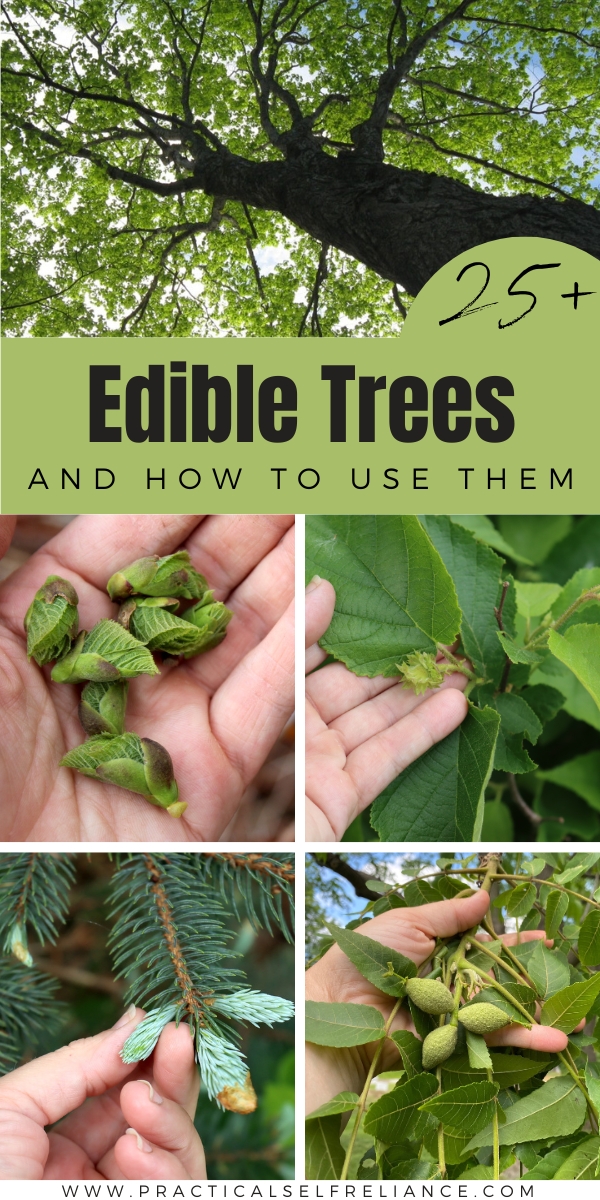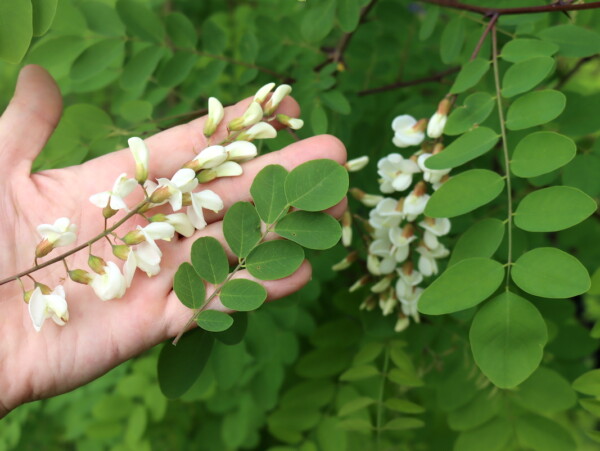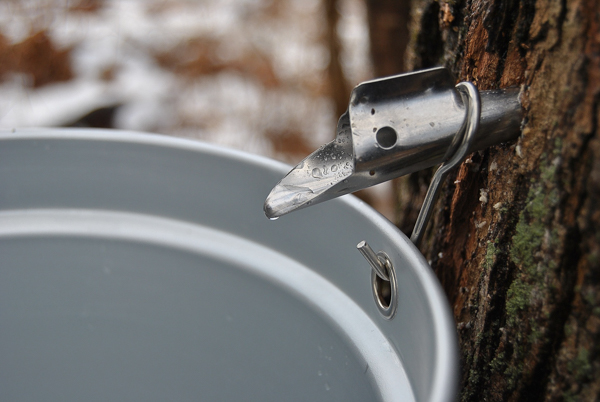Affiliate disclosure: This post may contain affiliate links. Please see our Privacy Policy.
Edible trees? Is that really a thing? Yes! Believe it or not, there are quite a few trees that are edible from root to tip. While most of us only ever consume the fruits of common orchard trees, there are plenty of tasty edible trees to be enjoyed in any woodland.

Table of Contents
- Parts of a Tree
- List of Edible Trees
- American Beech (Fagus grandifolia)
- Balsam Fir (Abies balsamea)
- Birch (Betula spp.)
- Eastern Hemlock (Tsuga canadensis)
- Eastern White Cedar (Thuja occidentalis)
- Eastern Redbud (Cercis canadensis)
- Gingko (Gingko biloba)
- Hawthorn trees (Crataegus sp.)
- Hazel Trees (Corylus sp.)
- Hickory (Carya spp.)
- Hop Hornbeam (Ostrya virginiana)
- Kentucky Coffee Tree (Gymnocladus dioicus)
- Linden (Tilia spp.)
- Maple (Acer spp.)
- Moringa (Moringa oleifera)
- Mulberry (Morus spp.)
- Pine (Pinus spp.)
- Poplar (Populus spp.)
- Sassafras (Sassafras albidum)
- Slippery Elm (Ulmus rubra)
- Spicebush (Lindera benzoin)
- Spruce (Picea spp.)
- Sycamores (Platanus occidentalis)
- Walnuts (Juglans spp.)
- Western Red Cedar (Thuja plicata)
- Willow (Salix spp.)
- Foraging Guides
Trees provide so much, from shade and oxygen to fruits and berries. Yet, we still overlook much of what they have to offer.
I’m a bit enamored with the concept of eating trees, as it seems so counterintuitive. Many trees, believe it or not, are quite edible. Some trees are completely edible, from root to tip.
While we busily scour the forest floor for wild greens, mushrooms, and medicinal plants, we often forget to glance up. So many of the trees around us offer food beyond just nuts and berries. You’re probably walking by delicious leaves, flowers, bark, sap, pollen, and catkins. We may have all but forgotten these incredible wild foods, but our ancestors used them as vegetables, seasonings, sweeteners, jams, flours, teas, medicine, and more.
As our societies became increasingly focused on agricultural production, we lost many of these foods from our cultures and diets, but remnants of them remain. Here in Vermont, we still tap trees for syrup each year. In Japan, people still cook and eat maple leaves, and in Appalachia, folks still add redbud blossoms to cocktails, salads, and baked goods each spring.
I think that life and our plates would be duller without these harvests. Learning to recognize and use these edible trees can help you bulk up your foraging, add more nutrition and flavor to your meals, and connect you with the land.
Like any part of foraging, it does take some skill and knowledge. There’s a season for everything, from harvesting leaves to catkins.
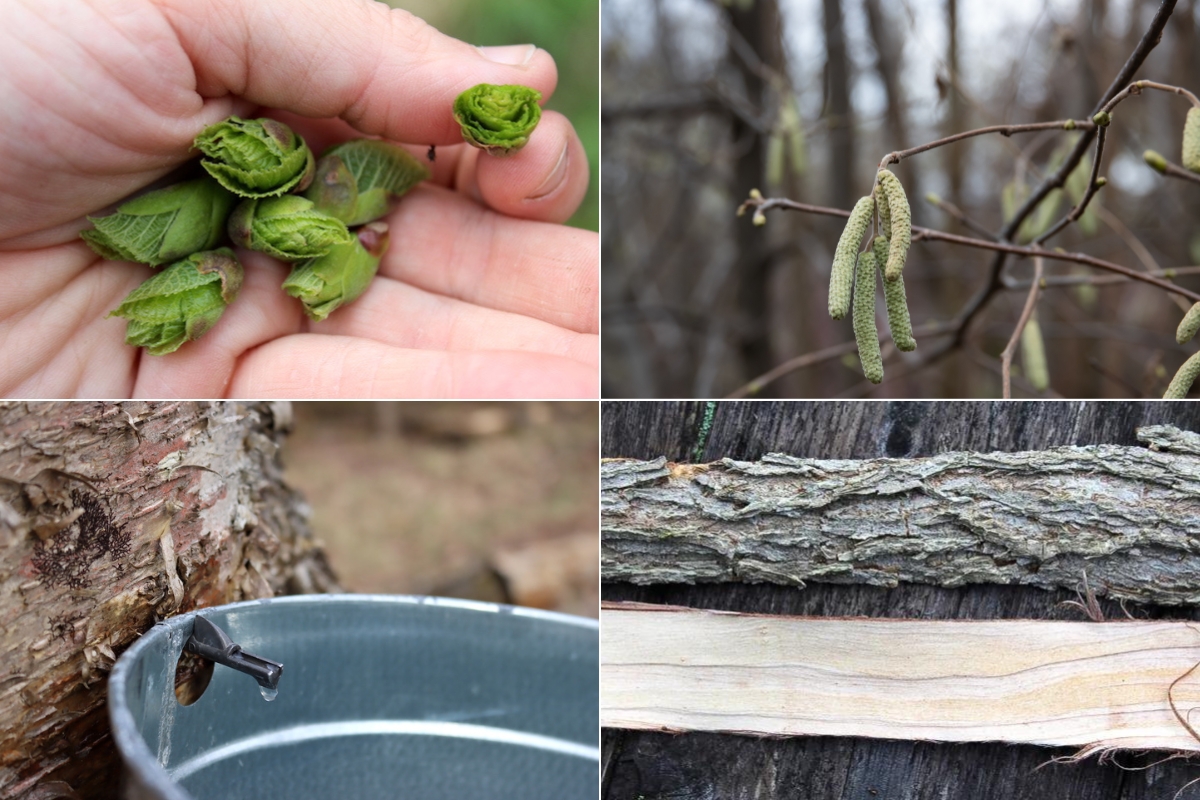
Parts of a Tree
If you’re going to eat a tree, it’s helpful to understand a little bit about its anatomy. Not every part of every species is edible, and even those that are may only be edible (or tasty) at a particular life stage or in a particular season.
Obviously, there are many types of fruiting tree, from apples to cherries and more, but we’re not focusing on the fruit. I’m focusing on eating the tree itself, be it the bark, leaves, root, catkins or other parts.
Here are the main parts we’ll be working through:
- Roots ~ The roots of many trees are softer and more digestible than the other tissues, and many roots have been used traditionally as medicine or as a salt or nutrient source.
- Root Bark ~ The outside of roots often has its own distinct bark, different from the bark of the actual tree.
- Sap ~ A sugar-rich nutrient source flowing through the phloem (inner bark) of the tree, this is often consumed fresh or boiled for syrup. Most of us are familiar with maple syrup, there are actually well over 20 different species of tree that can be tapped for syrup.
- Resin ~ Slightly different from sap, tree resins are compounds produced in response to an injury. It’s like nature’s bandaid and is often full of medicinal anti-microbial compounds, as well as intense flavors.
- Phloem (Inner Bark) ~ The active living portion between the coarse bark and dense wood inside the tree, this inner bark is rich in carbohydrates and full of sugar-rich sap. It’s traditionally stripped, dried, and made into flour from some tree species, namely pine bark flour and birch bark flour. With others, it’s simply cut and eaten fresh as sweet cooling strips right in the woodland.
- Outer Bark ~ Often considered a “dead” or protective layer on the outside, it actually is edible in some species. Though it is a protective layer, that layer often contains anti-oxidants and essential vitamins, and it’s usually eaten more for flavor and vitamins/nutrients than for actual calories as is the case with outer pine bark as it’s prepared in Scandinavia.
- Larger Branches, Trunk & Heartwood ~ Often not directly consumed, but used to add flavor to foods either by smoking with them or adding their wood directly to a boiling pot of something. Believe it or not, some trees are used medicinally this way, as a wood tea.
- Young Twigs ~ Distinctly from the larger branches, young twigs have a greater proportion of green growing tissue, sap, and phloem. They’re often made into nutrient-rich teas or are even consumed whole if young enough, depending on the species.
- Leaf Buds and Growing Tips~ There’s a special concentration of sugars and phenolic flavor compounds in very young leaves, before or just as they begin to unfurl. Linden buds are particularly sweet, and young pine candles (shoots) are full of resinous flavor that makes an excellent syrup.
- Leaves ~ Eaten at various stages from very young (like spruce tips), to fully dried and dead mid-winter (beech leaves).
- Catkins ~ Male reproductive parts of some species of trees that have historically been eaten as winter famine food or made into flour.
- Flowers ~ Often sweet and fragrant, the flowers of trees, when edible are not all that different from other species of edible garden flowers (like rose, peony, and lilac). Maple flowers, linden flowers, and black locust flowers are particularly choice edibles from the woods, but cherry blossoms of all types are hard to beat.
- Cones and Keys ~ Various seed-bearing fruiting bodies (that aren’t quite the same as fruits). Most people know about tasty edible pine nuts in some species of pine cones, but ash keys and maple seeds are also tasty.
- Fruits and Nuts ~ The obvious sources of food from trees, be they apples or walnuts.
- Mushrooms ~ Though you’re not directly ‘eating a tree’ when you consume mushrooms, you’re eating something that’s been eating a tree…and sometimes that particular species confer special properties to the mushrooms. Most of the species of mushrooms that grow on birch, for example, are highly medicinal because of compounds they’ve picked up from the birch tree itself.
List of Edible Trees
In spring, many of our deciduous North American trees are sending out tender new leaves. Their mild, sweet flavor and succulent texture are as good as many of the wild greens we harvest from nearby fields, gardens, and forests. They make excellent additions to spring salads and soups.
Coniferous trees, like spruces, are also putting on new growth, forming tender tips with citrusy flavors. Like their deciduous counterparts, conifer tips are lovely to eat fresh or used in desserts and teas and as flavoring for other dishes.
Other trees, like the beautiful eastern redbuds and black locust trees, burst with a profusion of sweet spring blossoms. These sweet blossoms make beautiful garnishes, jellies, and syrups.
Earlier in spring or late winter, you may also want to consider gathering sap. Most people know that sugar maple sap can be used to create maple syrup, but fewer know that many more trees have edible sap, which can be used to create sweet syrups, tasty drinks, and satisfying beer.
Many trees also have edible bark or roots, though we need to be mindful when harvesting this product as it can severely damage or kill the trees. Some, like hickory, can be used to make salt, while others, like pine, have nutritious inner bark that was often used as a survival food in times past.
Here is a list of edible trees in North America:
- American Beech (Fagus grandifolia)
- Balsam Fir (Abies balsamea)
- Birch (Betula spp.)
- Eastern Hemlock (Tsuga canadensis)
- Eastern White Cedar (Thuja occidentalis)
- Eastern Redbud (Cercis canadensis)
- Gingko (Gingko biloba)
- Hawthorn trees (Crataegus sp.)
- Hazel Trees (Corylus sp.)
- Hickory (Carya spp.)
- Hop Hornbeam (Ostrya virginiana)
- Kentucky Coffee Tree (Gymnocladus dioicus)
- Linden (Tilia spp.)
- Maple (Acer spp.)
- Moringa (Moringa oleifera)
- Mulberry (Morus spp.)
- Pine (Pinus spp.)
- Poplar (Populus spp.)
- Sassafras (Sassafras albidum)
- Slippery Elm (Ulmus rubra)
- Spicebush (Lindera benzoin)
- Spruce (Picea spp.)
- Sycamores (Platanus occidentalis)
- Walnuts (Juglans spp.)
- Western Red Cedar (Thuja plicata)
- Willow (Salix spp.)
Below, I’ll cover each of these common edible North American trees in detail, including basic information on how to find and use them.
American Beech (Fagus grandifolia)
American Beech is a large, majestic tree of the eastern forests. It regularly reaches more than 100 feet tall with a full, wide-reaching crown. The nuts it produces in early fall are loved by some foragers and are an essential food source for wildlife.
These gorgeous trees are shade-tolerant and slow-growing. Large beeches usually occur in forests that are in their final stages of succession. It thrives in areas where it receives plenty of moisture and nutrients. Unfortunately for city dwellers, you probably won’t find any of these trees near you. American Beech doesn’t tolerate the stresses of urban like soil compaction, salt, and pollution.
In early spring, American beech leaves are fairly tender and mild, making a good cooked green. You can also eat the tree’s inner bark, but it’s usually used as a survival food. Historically, people harvested, dried, and pulverized the inner bark to create a flour extender and substitute. To harvest the inner bark, you’ll need a sharp knife to shave off and discard the outer layers and then shave and dry the inner bark.
Unfortunately, harvesting the inner bark may kill the tree, so I don’t recommend it outside of survival situations. You can also try it on a freshly fallen tree or limb. Keep an eye out for these opportunities after spring storms!
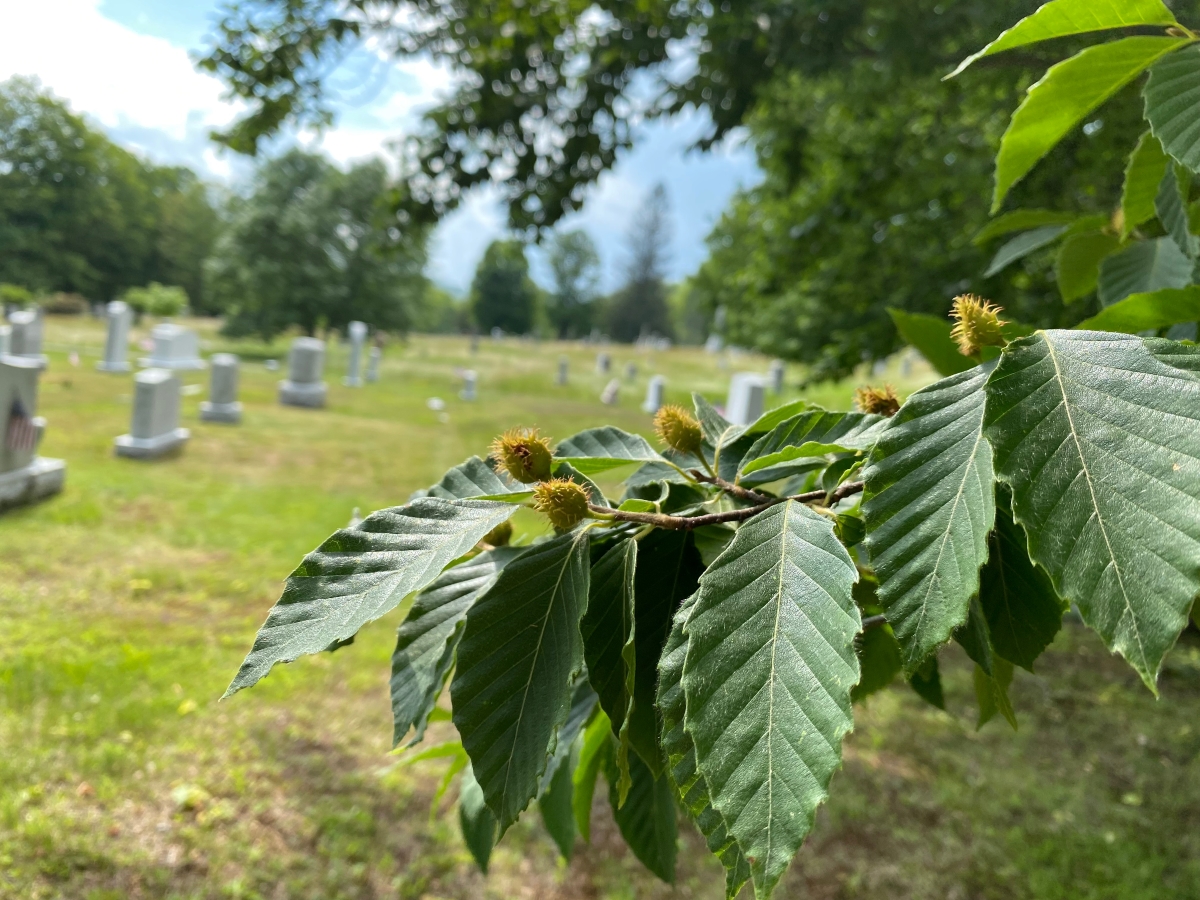
Balsam Fir (Abies balsamea)
Balsam fir is the quintessential tree of winter. Sometimes, you will smell a patch of balsam fir trees before you even reach them. Native Americans traditionally used the needles and resin of balsam fir medicinally. The needles can be made into tea to treat colds, flu, and sinus issues. The resin can be eaten or used as an antiseptic for burns, sores, and wounds.
In the spring, balsam fir tips are tender and flavorful. They’re high in vitamin C and wonderful for adding flavor to baked goods, vinegar, and syrup to create your own drinks. I also like to use the needles for tea year-round or blend them in sugar to add a hint of citrusy, balsam flavor and fragrance to sugar cookies and holiday baked goods.
The inner bark or cambium is also edible and offers some nutrition. However, it isn’t the tastiest item to forage, so I would list it only for survival purposes.
Balsam fir grows in the east and central northern United States and Canada. These slow-growing, shade-tolerant trees grow in cool, moist climates in swamps, slopes, and mountains. They are among the most cold-hardy species known, surviving temperatures as low as −49 °F (−45 °C).
Harvest Balsam Fir respectfully. As a cool climate species, it has been affected by climate change and habitat loss. It’s currently listed as endangered in Connecticut.
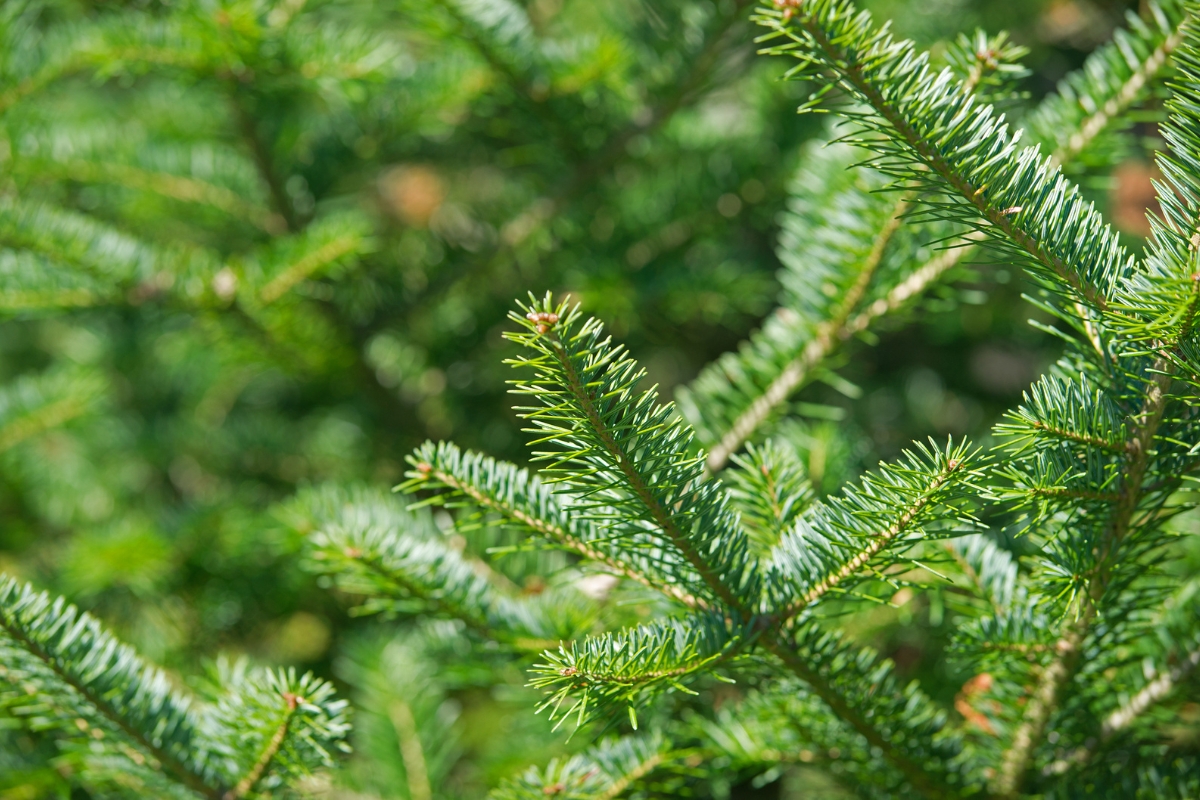
Birch (Betula spp.)
There’s a lot to love about birches! Their inner bark is edible, and their outer bark makes incredible natural firestarters. Birches are often overshadowed by other trees species, but they have incredible, edible sap.
While birches don’t have the same sugar content in the sap as the sugar maple, they still have sweet sap. You can drink it as soon as you harvest it, boil it down into birch syrup, or ferment it into a low-alcohol beverage, sometimes called “small beer.” This was common with early American colonists and is still practiced in some Scandinavian countries.
Birches also have edible inner bark. Like many barks, it was usually used in times of scarcity, but it is better than some options. Pioneers would dry and grind the inner bark to make a flour substitute or extender. You can also boil small strips of it and eat them like noodles, though they don’t taste much like pasta!
There are a number of birch species all of which share these edible characteristics. What birch you find near you will depend on your location and climate. Generally, birches are small trees and shrubs that grow in early succession forests. Some of these species you may find in North America are Paper birch (Betula papyrifera), yellow birch (Betula alleghaniensis), gray birch (Betula populifolia), river or black birch (Betula nigra), American dwarf birch (Betula glandulosa), mountain paper birch (Betula cordifolia), and the bog birch (Betula pumila) but there are many others, too!

Eastern Hemlock (Tsuga canadensis)
Telling people you eat eastern hemlock often induces fear because it is confused with the deadly toxic plants: poison hemlock (Conium maculatum) and water hemlock (Conium spp.). Thankfully, the eastern hemlock tree is safe and unrelated to these herbaceous plants.
Native Americans used the inner bark or cambium to make breads, soups, and pemmican, mixing it with dried berries and animal fat. They also used the needles to make a vitamin C-rich tea. Today, herbalists continue to use the needles. They make delicious tea and can be added to jun, a fermented drink similar to kombucha, which is made with green tea and honey.
Eastern hemlock grows in the northeastern United States, in the Appalachian mountains, and in the Great Lakes region. It generally grows in highland or northern areas with cool, humid conditions.
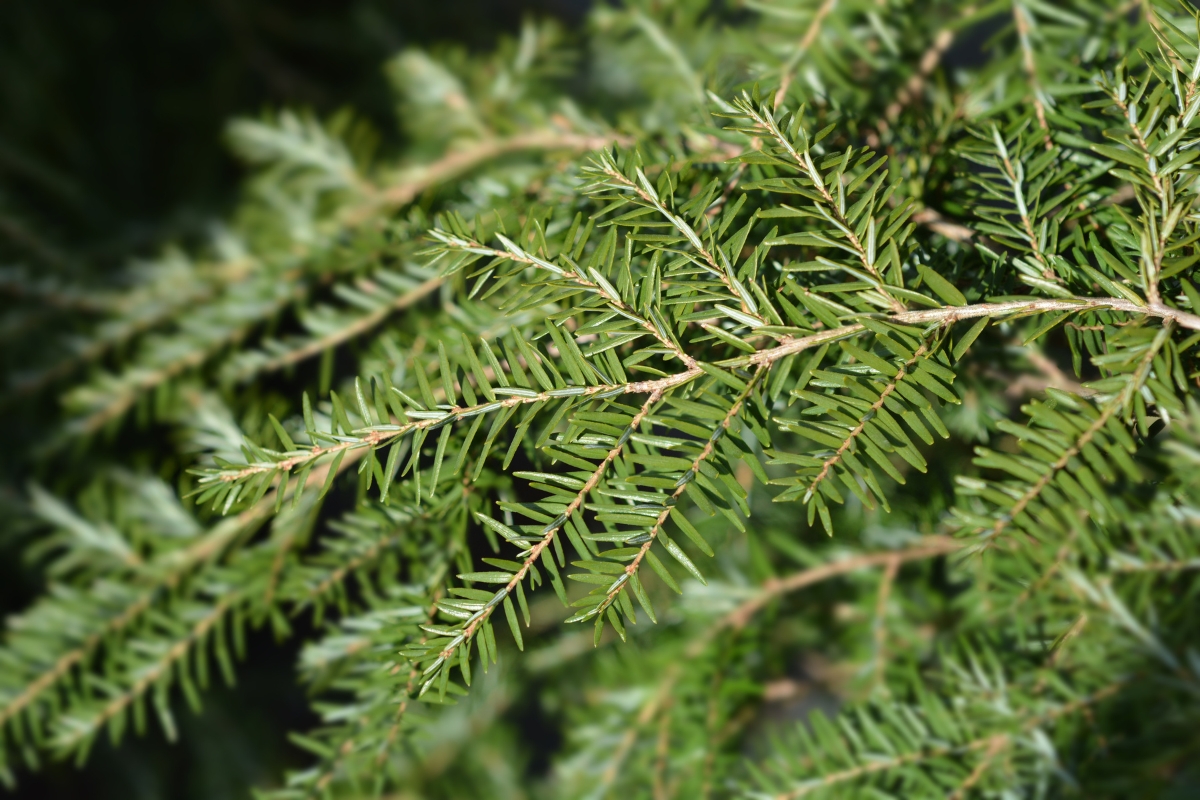
Eastern White Cedar (Thuja occidentalis)
Native Americans have used eastern white cedars for food and medicine for thousands of years. Like many conifers, the leaves and inner bark are edible and have some medicinal properties. After receiving advice from native peoples, Jacques Cartier, a French explorer, used the eastern white cedar to treat scurvy among his crew.
To use the inner bark, you have to shave off the outer bark and peel, dry, and powder the inner bark. I only recommend harvesting bark from fallen trees. Native Americans used it as emergency food and a lightweight travel food. You can use the needles to make tea or flavor other dishes. They can also be dried for later use.
Eastern white cedars typically grow in places with cool, moist summers. They can be found in New England, the Great Lakes region, and isolated pockets throughout the Appalachian mountain range. They often grow in wet areas, coniferous swamps, and areas with limited competition, like cliffsides. They’re incredible, slow-growing trees that often reach hundreds of years old. The oldest living eastern white cedar is believed to be 1,141 years old!
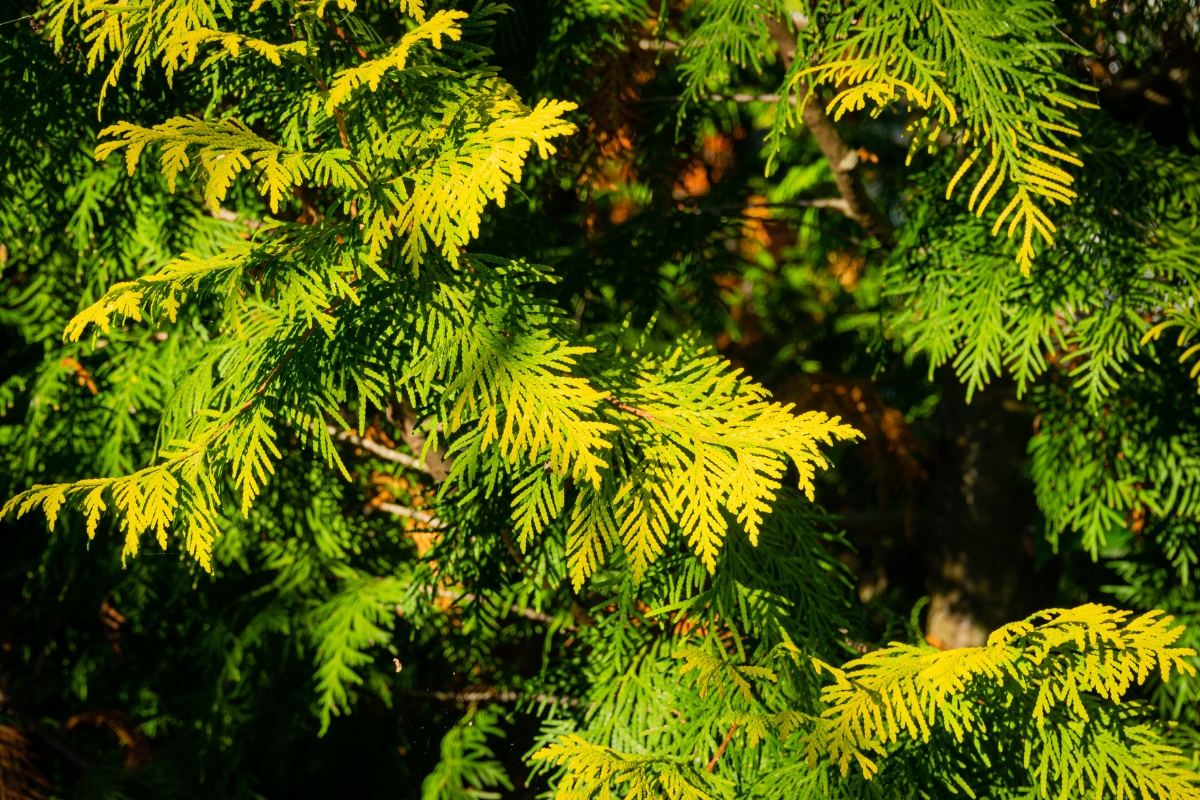
Eastern Redbud (Cercis canadensis)
Eastern Redbuds turn the mountainsides of the southern Appalachians a stunning purplish-pink hue each spring. They burst into blooms all along their branches long before other trees have leafed out. These flowers are primarily admired for their beauty, but many Appalachians still harvest a few.
The sweet, beautiful pink blooms make delicious teas, jellies, and syrups. They also make stunning garnishes for cocktails, salads, and baked goods. Keep in mind that these blooms are also an important source of protein-rich early-season pollen for native bees, so it’s best to keep your harvests small.
Some folks called them spicewood trees. The green twigs can be cooked with venison and other wild game to add flavor. Native Americans also made medicinal tea from the bark and roots to treat coughs, fevers, congestion, and vomiting.
If you have redbuds nearby, you probably noticed that they produce bean-like pods later in the summer. When green and small, you can eat the pods steamed, boiled, or sauteed a bit like snap peas. You can also pickle them to preserve them for later. When mature, you can harvest the beans inside the shells and roast them or boil them and eat them like lentils.
Eastern Redbuds are native to eastern North America. They grow from New Jersey west to Minnesota, south to Florida, and west to Texas. They’re smaller trees that generally only reach about 30 feet tall and grow in the forest understory. You can find them in rich woodlands, ravines, bluffs, streambanks, abandoned farmlands, and open rocky woodlands.
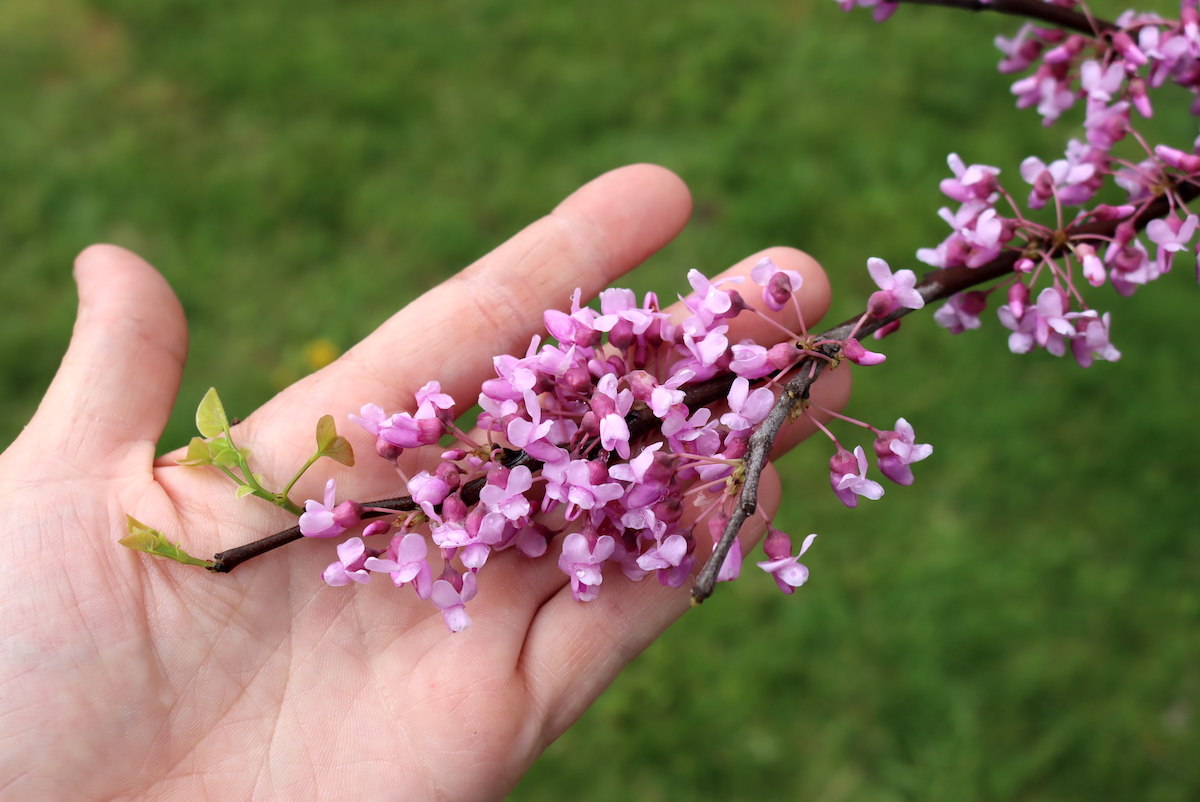
Gingko (Gingko biloba)
Gingkos aren’t native to the United States, but I thought they deserved a spot on this list anyway. Gingkos are commonly planted as ornamentals for their interesting leaves and tolerance to less-than-ideal conditions. These trees are so tough that they are one of the few living organisms that survived in the vicinity of the 1945 Hiroshima atomic bomb explosion.
Gingko leaves are edible, but in large quantities, they may cause stomach upset. Herbalists usually use them in tinctures or other remedies. Some researchers believe that the leaves improve blood circulation and brain health.
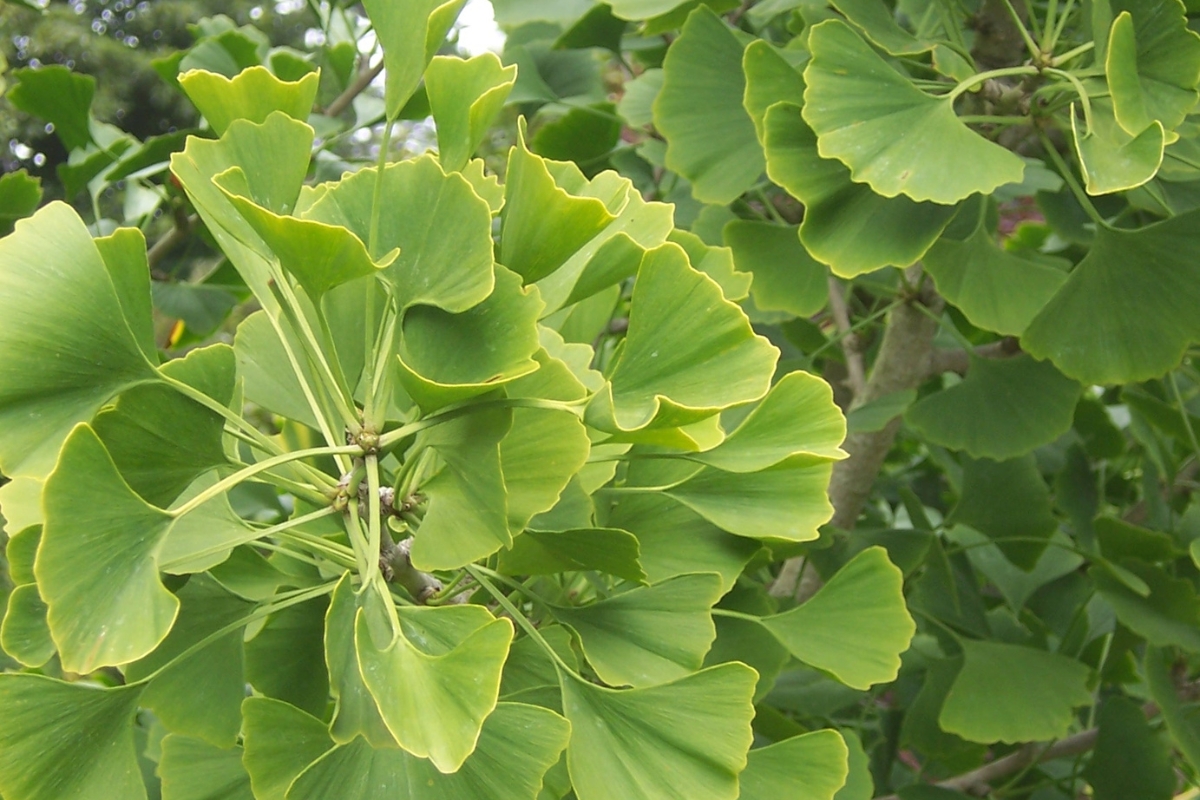
Hawthorn trees (Crataegus sp.)
Sometimes called the “Bread and Cheese Tree” in the UK, the leaves of hawthorn trees were traditionally eaten along with the fruit and flowers. Fruit “cheese” was made by cooking the fruit down into a paste, and that same process is still used to make quice paste or traditional membranillo.
Hawthorns make a similar fruit cheese, but the main focus here is the fact that other parts of this tree are edible, not just the fruit.
The tender spring leaves are especially prized, as well as the fragrant flowers in teas and salads.
Hawthorn is also a medicinal tree, and the flowers and fruit are used by herbalists to treat heart conditions.
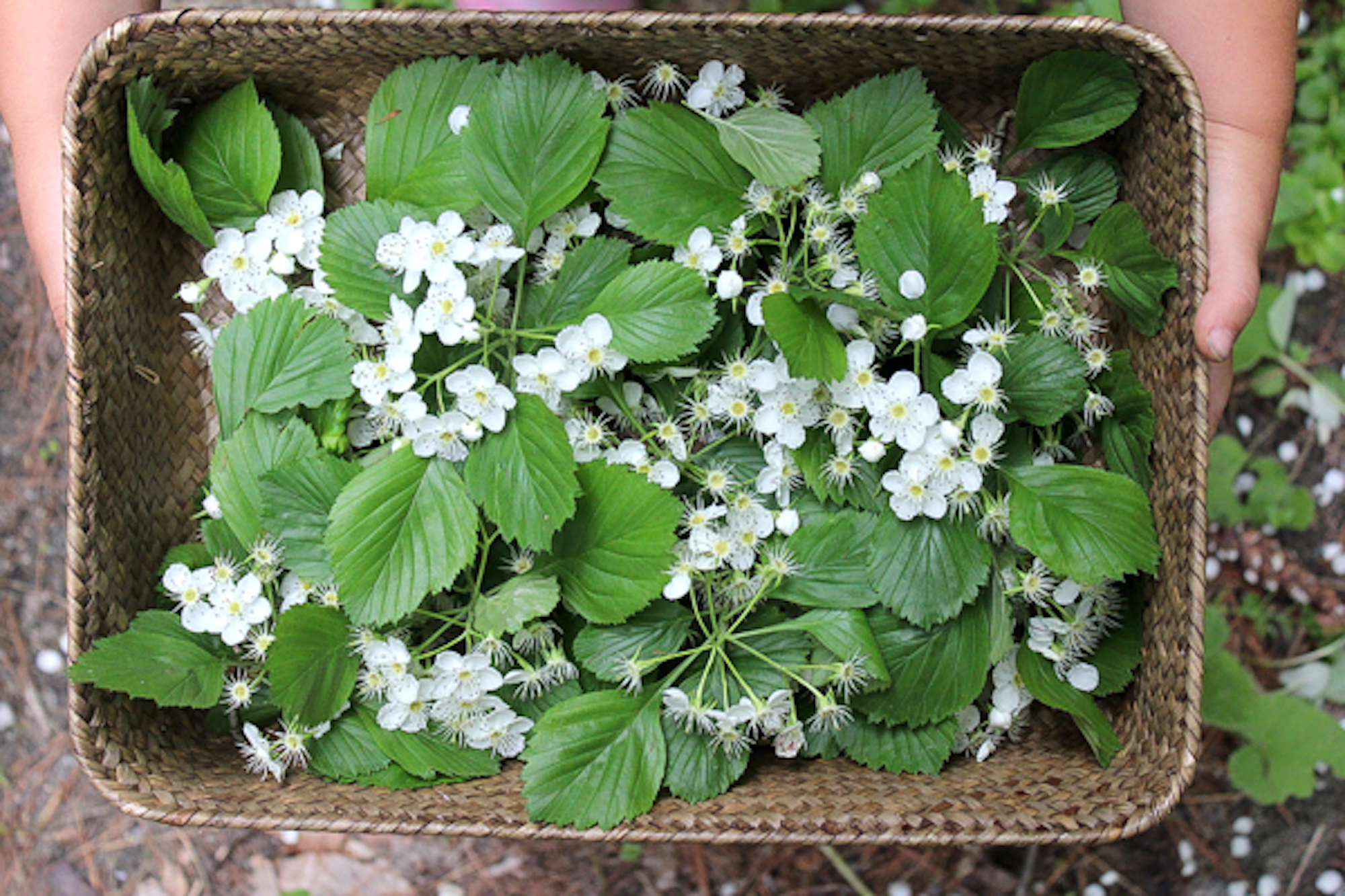
Hazel Trees (Corylus sp.)
Best known for their abundant edible nuts, wild hazelnut trees also have edible leaves, bark and catkins.
The catkins were made into flour historically, and the leaves were enjoyed in salads. These days, foragers collecting anything but the nuts are usually looking for medicinal benefits rather than food, but it’s good to know they’re out there in a survival situation.
Squirrels may beat you to the actual hazelnuts, but that’s not all the tree has to give!
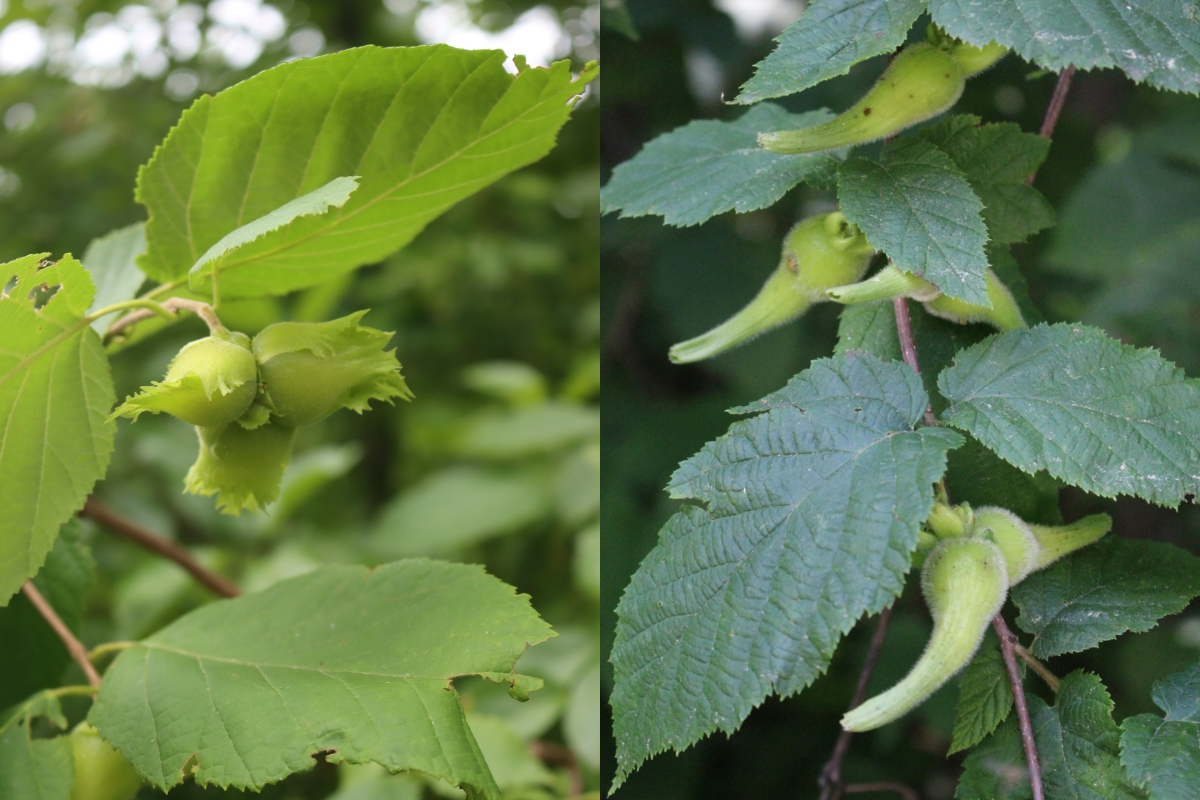
Hickory (Carya spp.)
Hickories are towering, nut-producing hardwood trees that grow in temperate forests. There are twelve species native to the United States. Some foragers may know them for their nuts, but fewer may be aware that hickories also offer interesting edible roots and sap.
Sodium is essential for the human body, and hickory provides a survival source for it. Although it can be quite labor intensive, you can make salt by harvesting and boiling down hickory roots. It’s best to shred or finely chop the roots and boil them. Remove the root pieces when the liquid starts to thicken. Continue cooking until there is a salty, blackish powder at the bottom of your pot.
Hickory trees can also make syrup, but they’re not tapped for syrup like other trees. You actually make hickory syrup out of the bark instead, and wild shagbark hickory is what’s usually used since it has flavorful, naturally shedding bark.
Look for hickory trees growing in upland forests or well-drained lowland areas in the southeastern, eastern, and midwestern United States.
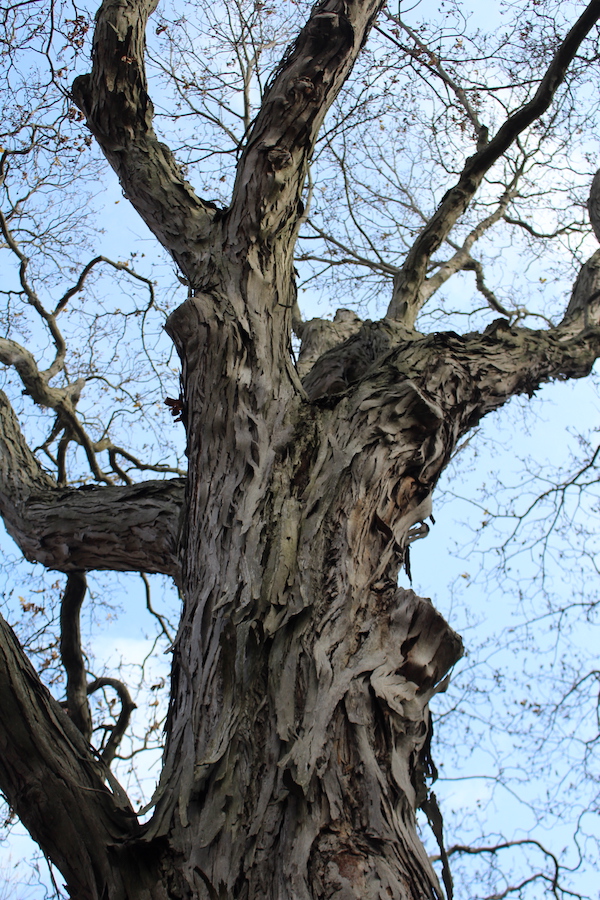
Hop Hornbeam (Ostrya virginiana)
If you’ve ever found something that looks like hops in the forest, you’ve probably seen an American Hop Hornbeam. These small, understory trees produce papery fruits that look a lot like the hops we use in beer making.
American Hop Hornbeams are native to the eastern United States from Canada south to Florida and west to Texas. In the United States, they predominantly grow as an understory species in lowland and foothill forests. American Hop Hornbeams can reach 50 feet tall but generally top out at about 30 feet.
Herbalists use the wood and bark from American Hop Hornbeam to make medicinal teas, infusions, and baths. These remedies are believed to sore muscles, arthritis, and toothaches. Those hop-like fruits also contain edible seeds. When young, the husks are green and contain minuscule seeds, but slowly, they mature to brown and contain edible seeds about the size of sunflower seeds.
Hop Hornbeam is also a good tree for homesteaders to recognize because it has excellent, strong wood, which is great for tool handles in fence posts. Its wood is so strong that it sometimes goes by the nickname ironwood.
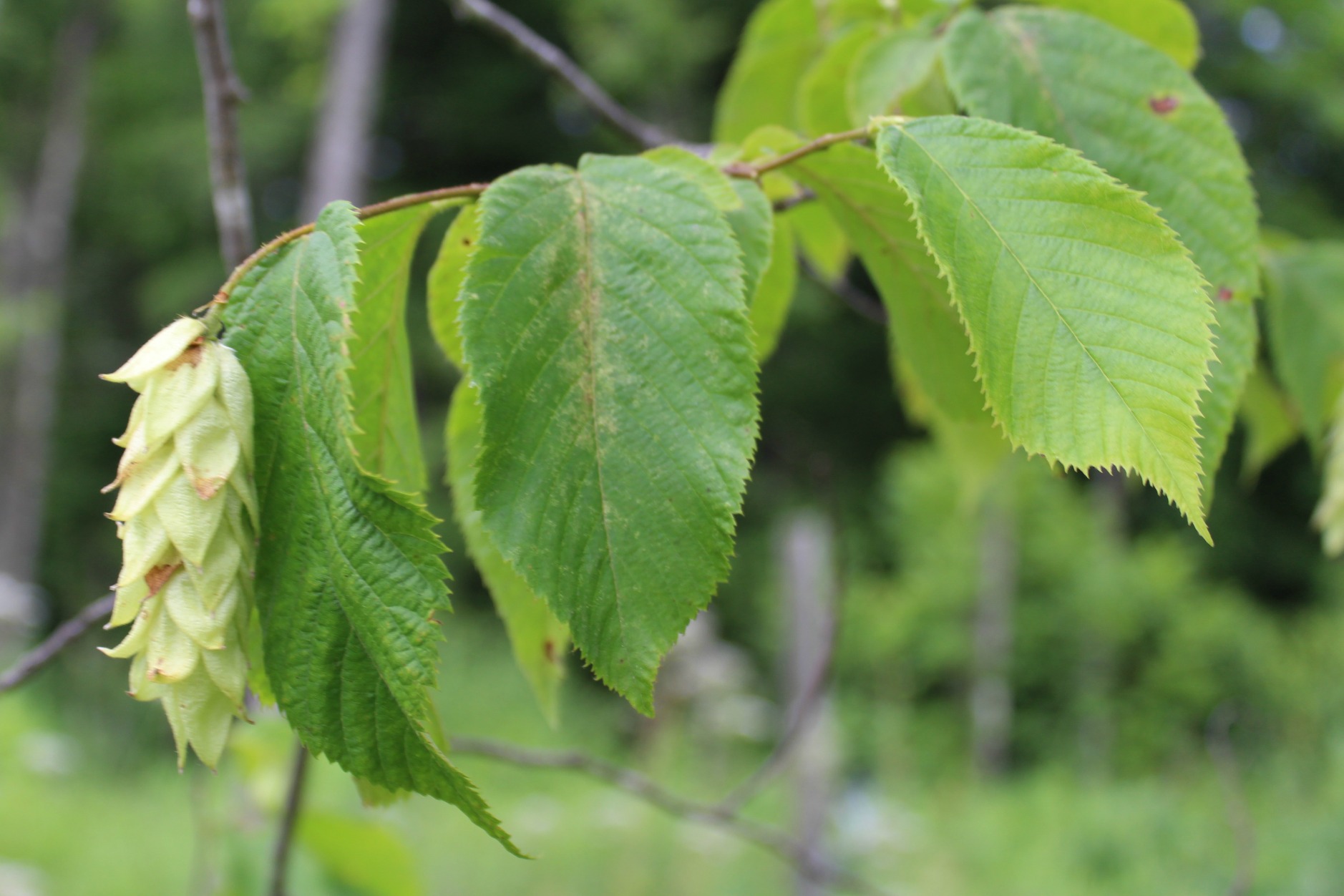
Kentucky Coffee Tree (Gymnocladus dioicus)
Kentucky coffee trees are unusual trees with a limited range. In the United States, they grow from Kentucky and Connecticut in the east to Kansas, Nebraska, and South Dakota in the west, as far south as northern Louisiana, and north to southern Wisconsin and Michigan. Their tough seeds don’t germinate well except in very wet conditions, and researchers believe that these trees may have evolved when megafauna still roamed the continent, eating, partially digesting, and depositing the seeds.
Kentucky coffee trees usually grow in flood plains and river valleys but occasionally on rocky hillsides and upland forests with limestone soils. Widely used by Native Americans, these trees are often associated with prehistoric village sites.
Kentucky coffee trees produce bean or pea-like seed pods. The seeds within can be roasted and eaten when mature and brown. Don’t eat raw seeds; they’re toxic! The Pawnee, Ho-Chunk, and Meskwaki roasted and ate the seeds. European colonists also used the seeds, often using them as a coffee bean substitute in times of poverty.
Urban foragers may also be able to find this one. Kentucky coffee trees are sometimes planted in gardens, parks, and along streets. They tolerate poor soil, drought, and road salt and are very resistant to pest and disease issues.
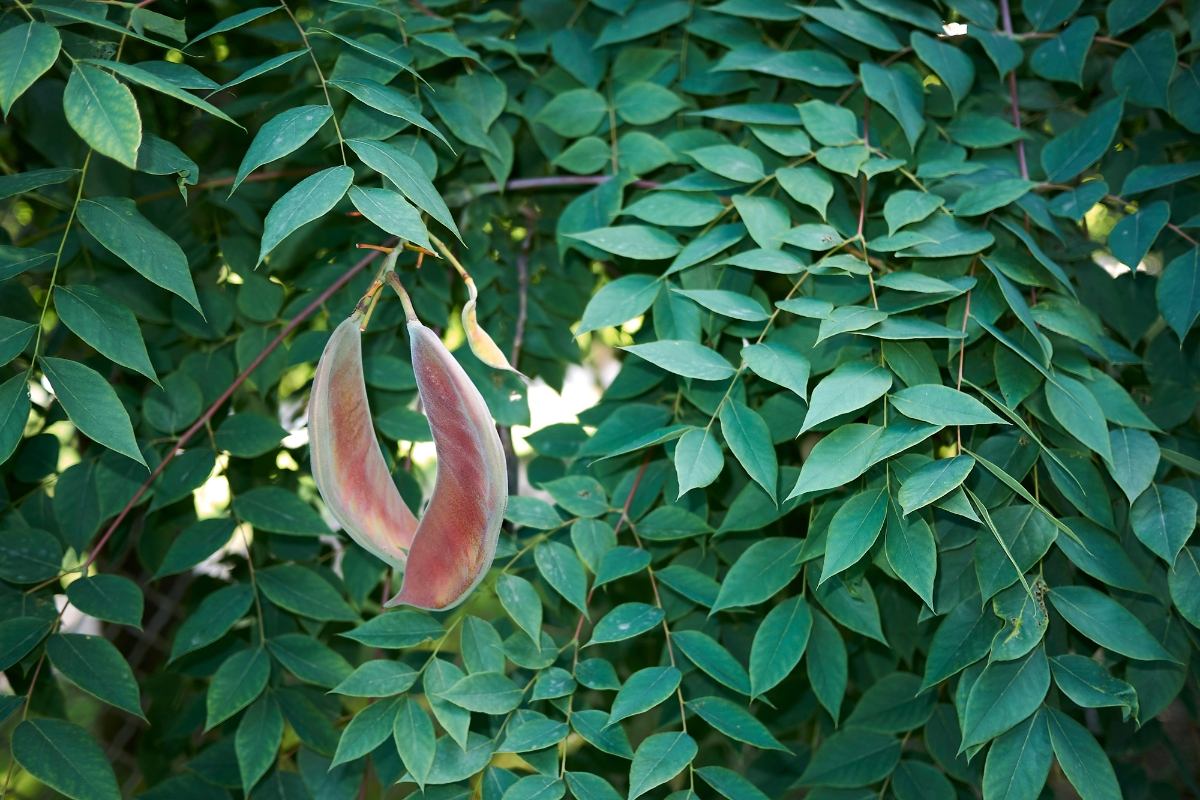
Linden (Tilia spp.)
These beautiful trees are often planted as ornamentals, but they have so much more to offer. All parts of linden trees are edible, including sap, bark, leaf buds, leaves, flowers, and seeds. The fragrant flowers are also loved by beekeepers for the richly flavored, light honey they produce.
Herbalists, particularly in Balkan countries like Greece and Serbia, still use linden medicinally. They make tea from the dried flowers and leaves. They believe that this infusion acts as a relaxant, helping to soothe muscle spasms and anxiety and promote sleep.
There are several species of linden native to North America and several more from Asia and Europe that you may see planted as ornamentals and shade trees. They’re mostly large deciduous trees growing 65 to 130 ft tall. Linden trees thrive in rich, well-drained soil.
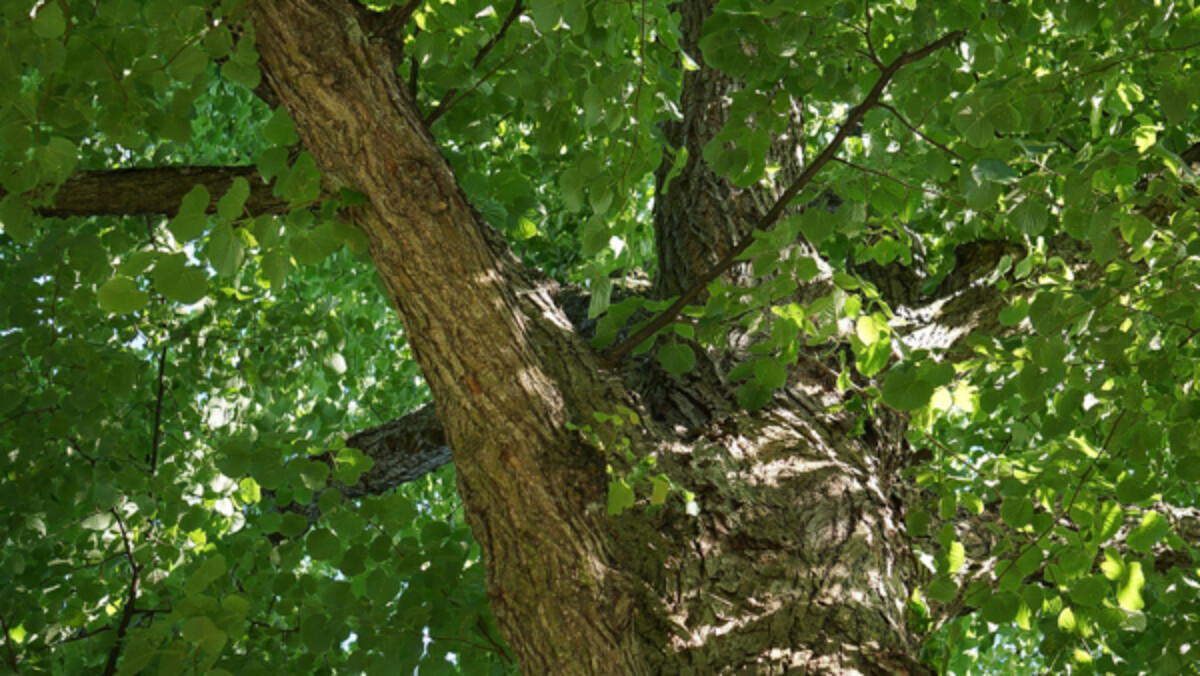
Maple (Acer spp.)
There are about 13 species of maple and several cultivars that grow in the United States, with the sugar maple (Acer saccharum) on the East Coast and the bigleaf maple (Acer macrophyllum) on the West Coast being probably the best well-known. Maples are widespread, and their habitat varies with species.
If you’ve ever enjoyed real maple syrup on your pancakes in the morning, you have already eaten some sugar maple! They are the species most commonly tapped for sap to boil down and make syrup. While other maple species don’t contain the same amount of sugar in their sap, they, too, can be tapped for sap and syrup-making. This includes red maple (Acer rubrum), black maple (Acer nigrum), silver maple (Acer saccharinum), boxelder (Acer negundo), and others.
It’s not just maple sap that’s edible. You can eat maple inner bark, leaves, and seeds. The inner bark is generally used as a survival food. The leaves are usually most tender and flavorful when young, but in Japan, people love to batter and fry the colorful leaves of the Japanese Maple in autumn.
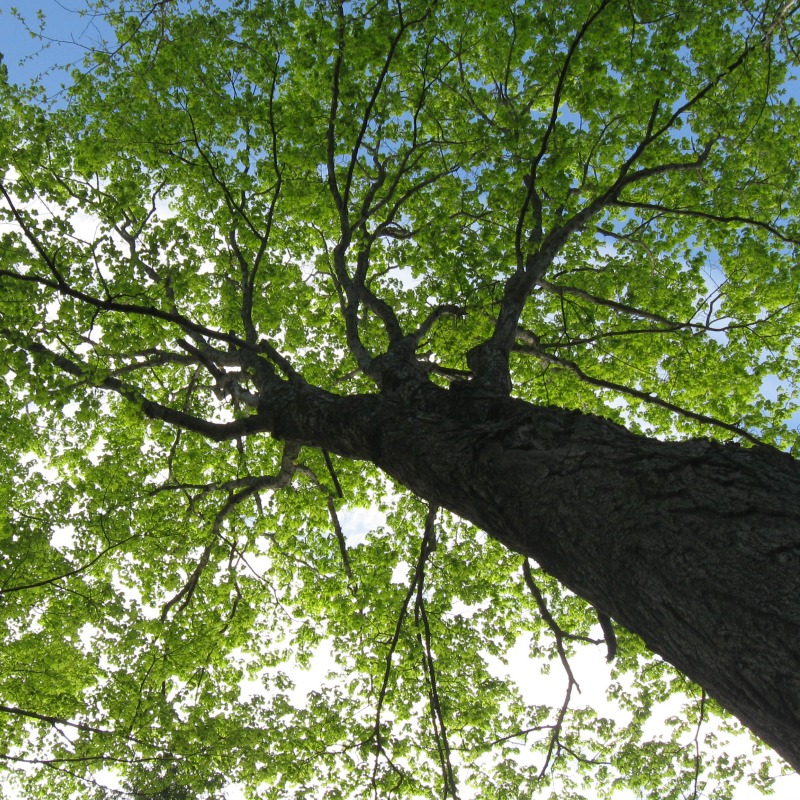
Moringa (Moringa oleifera)
Moringas aren’t native to the United States; they’re native to parts of Africa and Asia. I decided to add them to this list because they’ve gained a lot of popularity in recent years among the permaculture and food community.
These trees are edible in their entirety. You can eat the leaves, flowers, pods, seeds, bark, and roots. The leaves are one of the tastiest, most commonly used parts of the tree. They are high in vitamins, minerals, and amino acids. Moringa is believed to have potent anti-inflammatory and antioxidant properties. Herbalists believe that it may also boost energy levels and the immune system.
Unfortunately, moringa is only hardy to zone 9, so you will only find it growing outdoors in the deep south. However, it is incredibly fast-growing and puts on about 10 feet per year. You can grow it as an annual crop or indoors if you keep it heavily pruned.
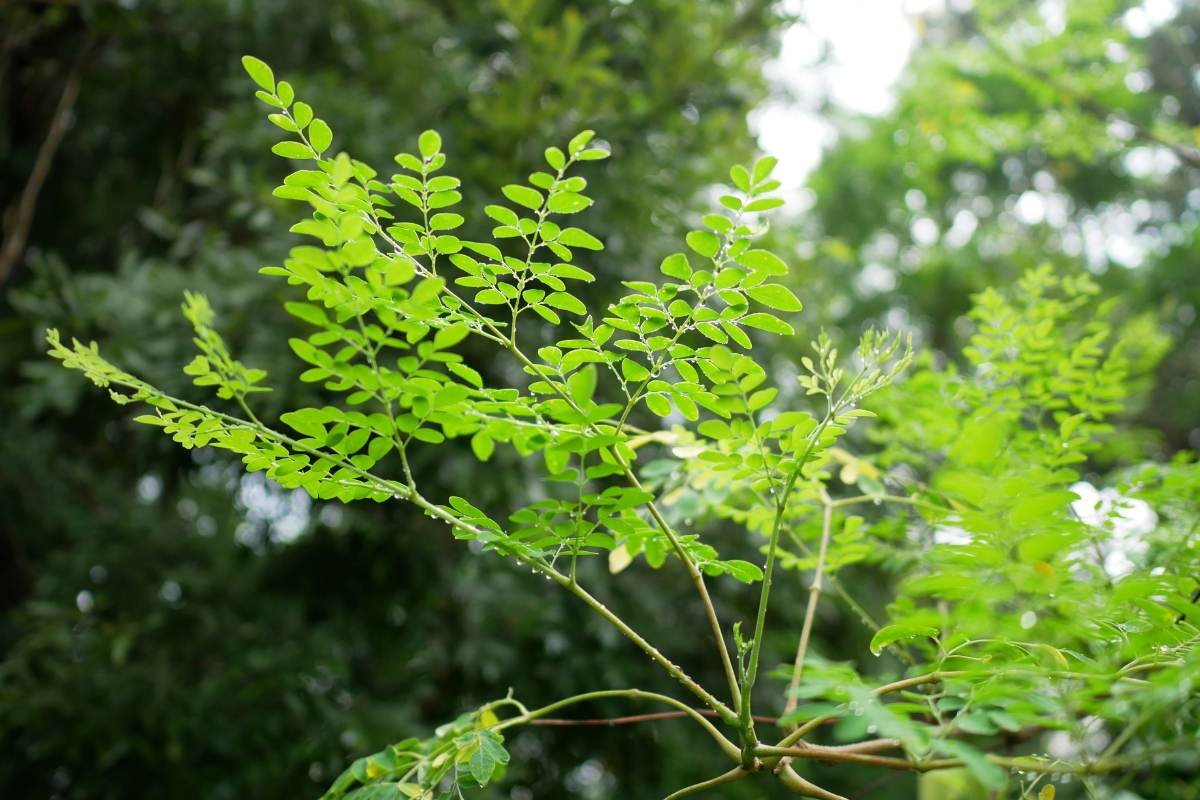
Mulberry (Morus spp.)
Mulberries are wonderful trees with sweet, blackberry-looking berries. There are two species native to the United States: the red mulberry (Morus rubra) and the Texas mulberry (Morus microphylla). Interestingly, the most widespread mulberry is probably an introduced species, the white mulberry (Morus alba). Another introduced species, the black mulberry (Morus nigra) grows in scattered patches in the southern United States.
This tree is highly underrated. Its berries are excellent for fresh eating, pies, and preserves. It also has edible, nutritious leaves that are tender and lack any trace of bitterness, especially when harvested young. Expert forager Sam Thayer says they are reminiscent of nettle leaves without the sting and are probably the best greens from a woody plant.
Mulberries are generally easy to find. Introduced mulberries tend to grow in disturbed habitats like abandoned farmlands, roadsides, city lots, and railroad tracks, while native mulberries tend to grow in openings and edges of deciduous forests.
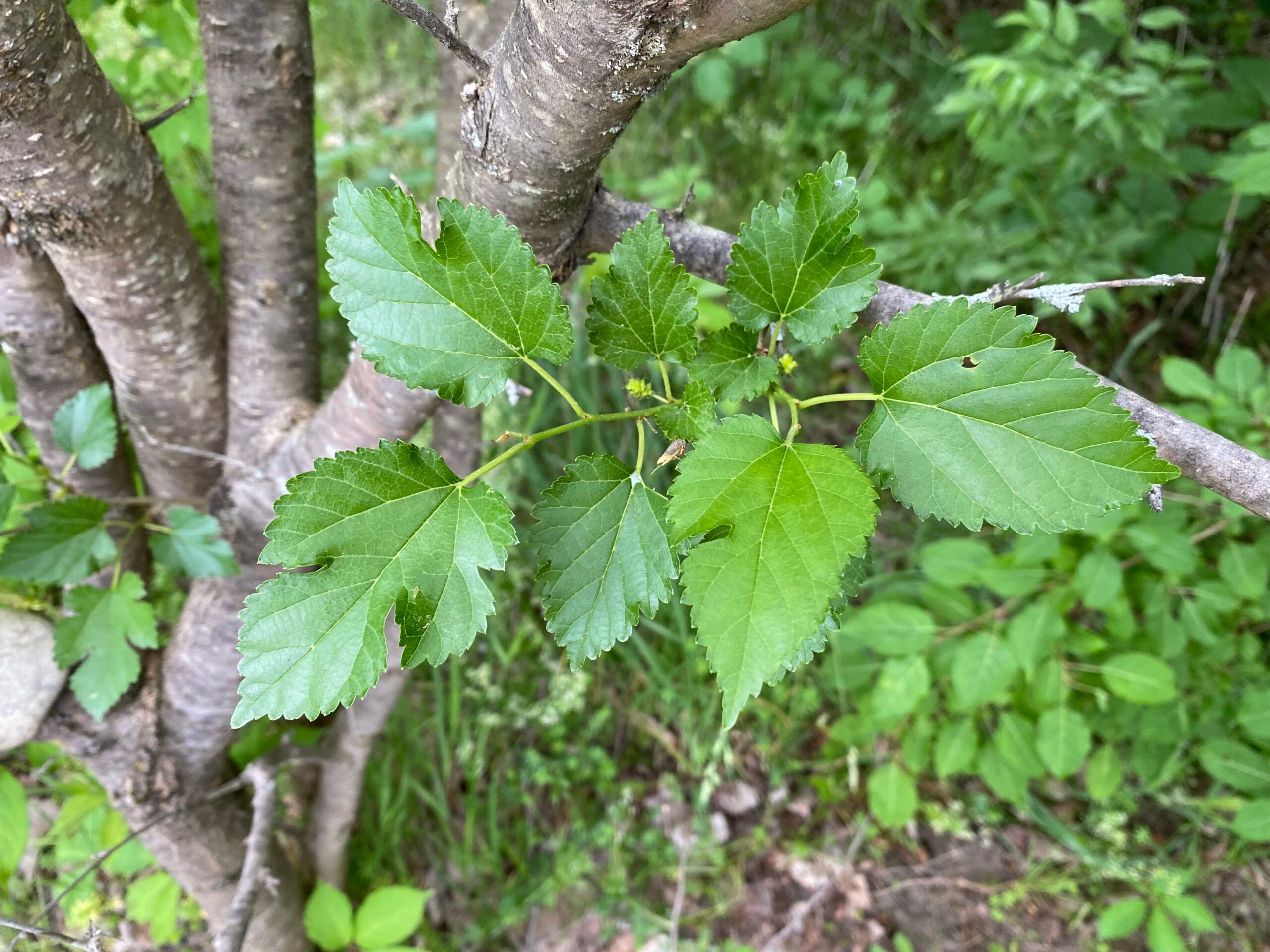
Pine (Pinus spp.)
Pines are incredibly widespread. They grow in some of the coldest and hottest climates on the planet, and thankfully, for humans, they’re incredibly helpful to have around. They have both edible and medicinal properties. Depending on the species, pines have edible seeds, cones, needles, inner bark, and pollen.
The seeds inside pine cones are edible, and you may have eaten them before in pesto. However, some species have much larger seeds than others. Pines also produce male and female cones, both of which can be eaten when they’re small and green. The male cones can be eaten raw, but you’ll need to cook the female cones; they tend to be tougher. Pine pollen is primarily used medicinally, and the needles can be used as tea or as a spice. They are high in vitamin C. Like many other trees, the inner bark is usually reserved as a survival food.
Don’t confuse pines with similar-looking but toxic species like Yew (Taxus spp.) and Norfolk Island Pine (Araucaria heterophylla), which isn’t a true pine species. Some sources also list lodgepole pine and ponderosa pine as toxic, though many sources debate this. Lodgepole pine may act as an abortifacient. Do your own research and use common sense with these species.
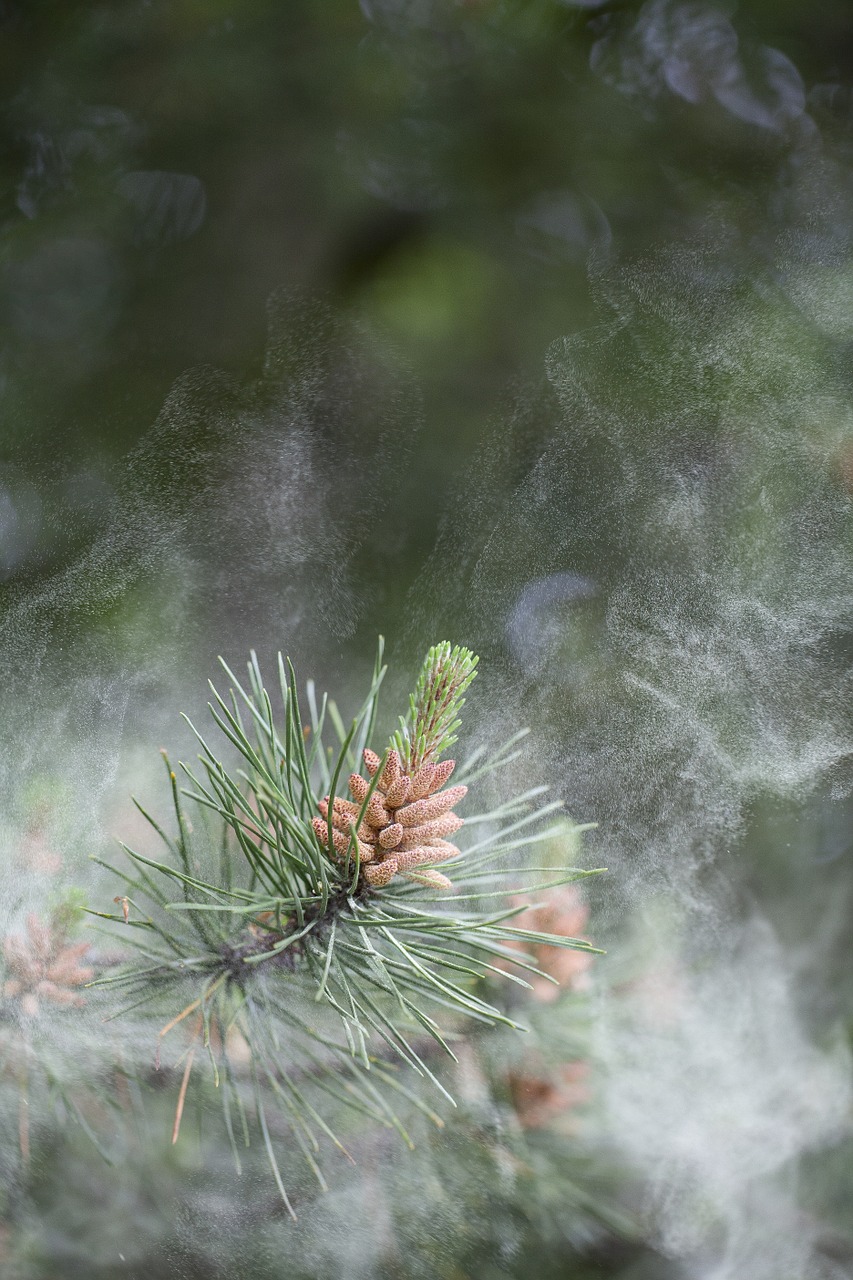
Poplar (Populus spp.)
The poplar, or Populus genus, includes aspens and poplars. These trees grow throughout the United States in a wide range of habitats, from low elevations to subalpine habitats. They tend to thrive in moist, well-drained soils.
All of these species have sweet, starchy inner bark that you can eat raw or cooked. You can eat it in strips or dry it and grind it into a flour substitute. Keep in mind that harvesting inner bark can kill the tree. Generally, it’s best to try this when you come across a freshly fallen tree. One species, the Quaking aspen (Populus tremuloides), also has edible catkins.
Additionally, poplars are some of the tree species you can tap for sap. The sap isn’t as sweet as that of the sugar maple, but you can boil it down to syrup, drink it fresh, or ferment it into a slightly alcoholic beverage.
Sassafras (Sassafras albidum)
Sassafras is one of my favorite trees to introduce young foragers to. This fun tree has three different leaf shapes, including ones that look like mittens! These fun leaves are also edible and have flavor and fragrance reminiscent of fruit loops.
The tree’s wood, leaves, and bark were also important in Native American culture. They used the roots to make a medicinal tea for treating colds, fevers, and digestive issues, and as an overall health tonic. The Choctaw used the powdered leaves to thicken soups and stews.
In Louisiana in the 1800s, enslaved African Americans blended their culinary traditions with Choctaw, Spanish, and French influences to create a type of gumbo called filé gumbo, which is thickened with sassafras leaves rather than okra.
Today, many Appalachians still make tea from the roots as a spring tonic. Sassafras was also a traditional ingredient in root beer. However, the FDA banned it. Some research has shown that safrole, a compound in sassafras oil, may be carcinogenic.
Sassafras is a relatively small tree that usually stays under 80 feet tall. It grows in the eastern woodlands from southern Maine west to Iowa and south to Texas and Florida. They thrive in rich, well-drained soil. The seedlings need full sun, so you will often see them popping up in areas where storms have taken down other trees. They can send out root sprouts and sometimes form dense, small colonies.
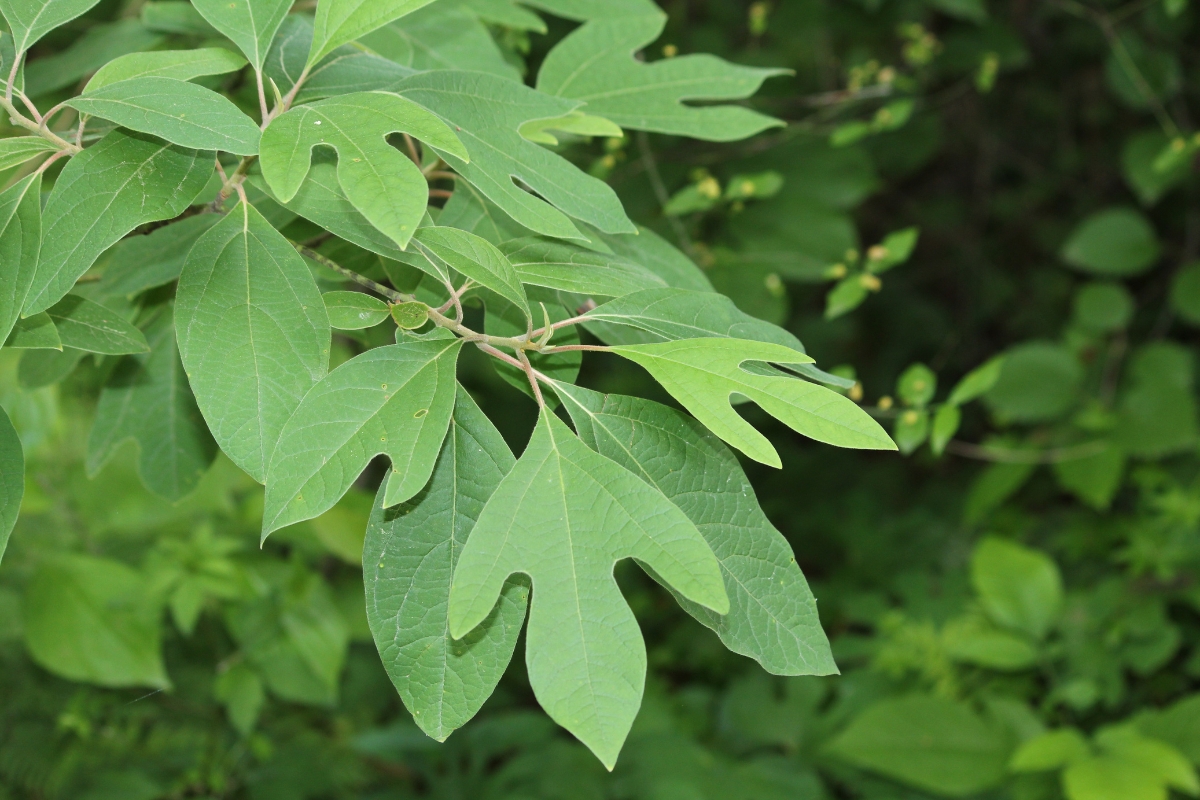
Slippery Elm (Ulmus rubra)
Slippery Elm is a medium-sized, deciduous tree that grows in moist, upland forests of the eastern United States. It’s best known as a medicinal species. The inner bark of slippery elm is often used in teas and other medicines and is actually approved by the FDA as a demulcent.
Slippery elm also has edible leaves. They’re best when young, and you can eat them raw or cooked, but they’re often slightly bitter. You can also dry them and make tea. As I mentioned above, the inner bark is known as medicinal, but it’s also starchy and edible. The seeds are edible, raw, or cooked and are easy to toss into salads and other dishes.
While I enjoy using slippery elm, I actually recommend against using the inner bark from wild trees. Slippery elm is now endangered. It has been extirpated from many areas due to overharvesting of the inner bark for medicinal use, which kills the tree, and the spread of Dutch elm disease.
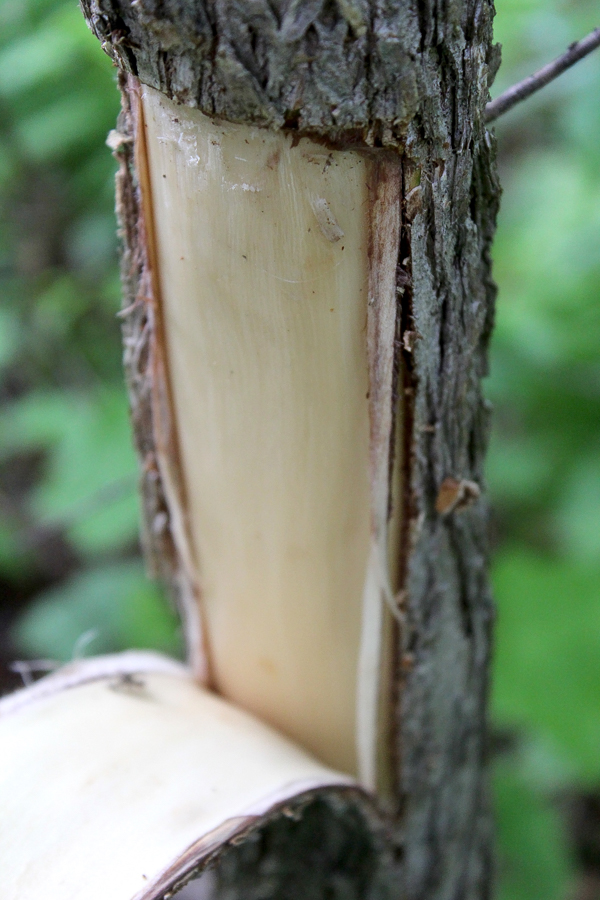
Spicebush (Lindera benzoin)
Spicebush is a beautiful shrub native to the eastern United States named for its spicy, fragrant foliage. In early spring, it produces showy clusters of yellow flowers along its branches and brilliant yellow foliage in autumn. Spicebush usually grows between 6 and 12 feet tall.
All parts of these shrubs are edible. You can eat the leaves, flowers, twigs, buds, and fruit, whether it’s ripe or unripe. As the name and smell suggest, all parts of the plant are intensely flavored. Native Americans often used spicebush medicinally and to flavor food. The berries do well in flavourful recipes like curries, pickles, and spicy sauces.
You can find spicebush in various woodland habitats, including bottomland forests, dry slopes, and swamps. It thrives in rich soil and was often used by early settlers and land surveyors as an indicator of good agricultural land.
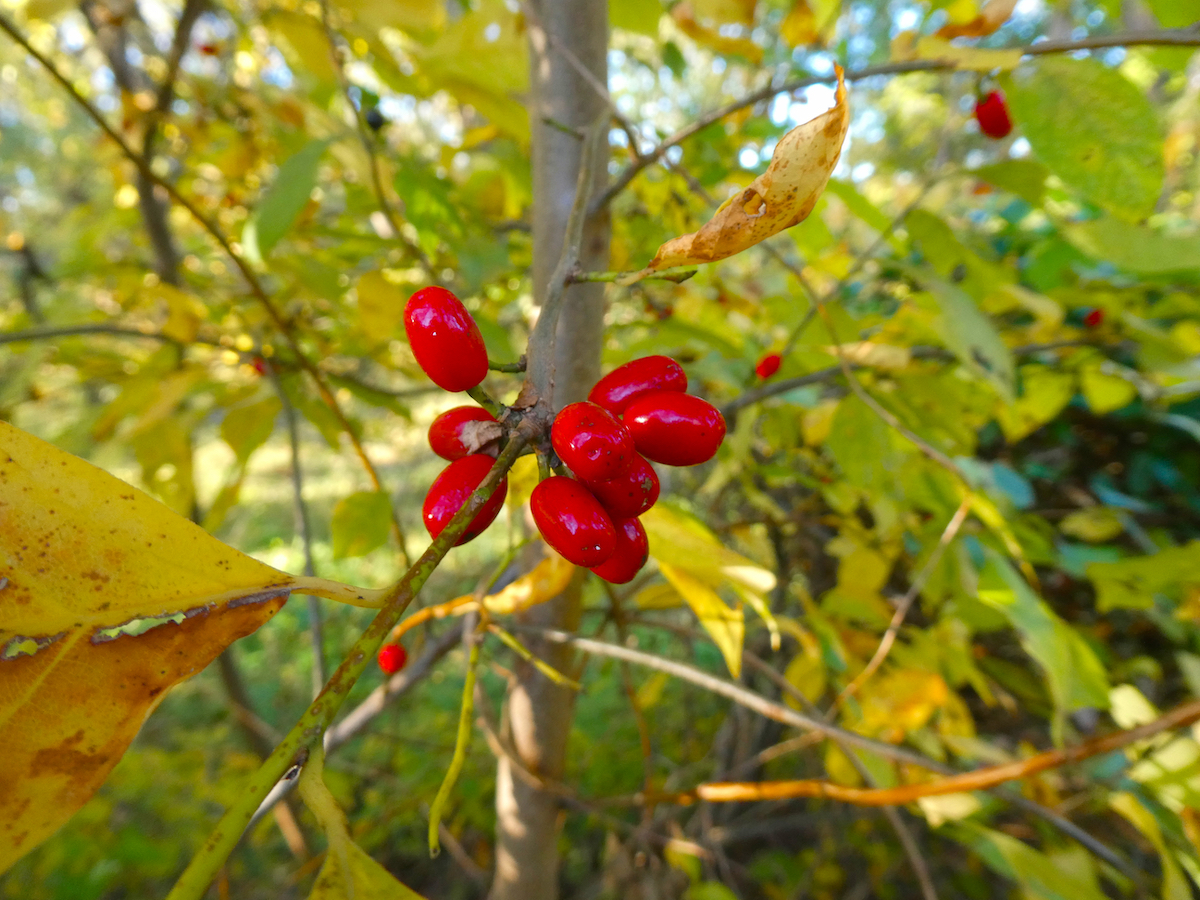
Spruce (Picea spp.)
Spruce trees are one of my favorites because they’re gorgeous and provide year-round foraging. The needles make a nourishing and flavorful tea that’s full of vitamin C. It’s perfect for giving your immune system a boost during the winter months.
While you can use any of the needles, the young spruce tips are the best part. They’re flavorful and tender, perfect for spruce tip tea, as well as desserts, and even salads. While spruce tips are arguably the best part, you can also eat the inner bark, sap, young cones, and pollen.
Worldwide, there are about 35 species of spruce, several of which grow in the United States. In New England and the Appalachian mountains, you can find red spruces (Picea rubens). In the western states, you can find Englemann spruce (Picea engelmannii), blue spruce (Picea pungens), and Sitka spruce (Picea sitchensis). Norway spruce (Picea abies) is non-native but is often planted as an ornamental tree in the United States. Their habitat varies widely with species, but most species prefer cool, moist climates.
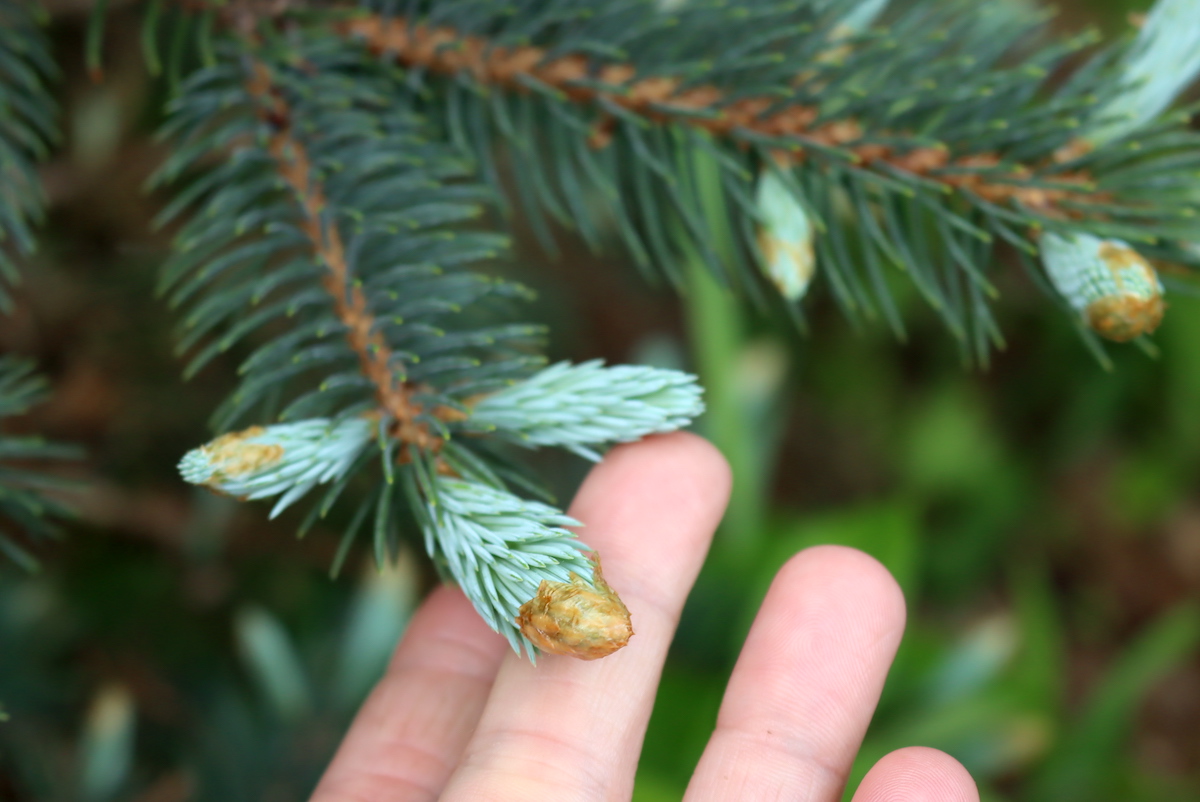
Sycamores (Platanus occidentalis)
Sycamores are beautiful, long-lived, bottomland trees of the eastern United States. They prefer moist soil and are often found growing around wetlands and in riparian areas along streams and rivers.
Sycamores often live 500 to 600 years old and grow massive. In 1770, George Washington reported a sycamore in what is now Point Pleasant, WV, as being 44 feet and 10 inches (13.67 meters) in circumference. They have a distinctive appearance because their upper bark flakes off in large irregular chunks, leaving behind a smooth surface of mottled gray, white, brown, and greenish.
Sycamores aren’t usually listed as edible, but historically, herbalists used their bark medicinally, and the sap is edible and can be used to make drinks or syrup. Though their sap doesn’t have the high sugar content of sugar maples, sycamores sap does produce a rich, flavorful syrup. Many producers find it has a honey or butterscotch-like flavor.
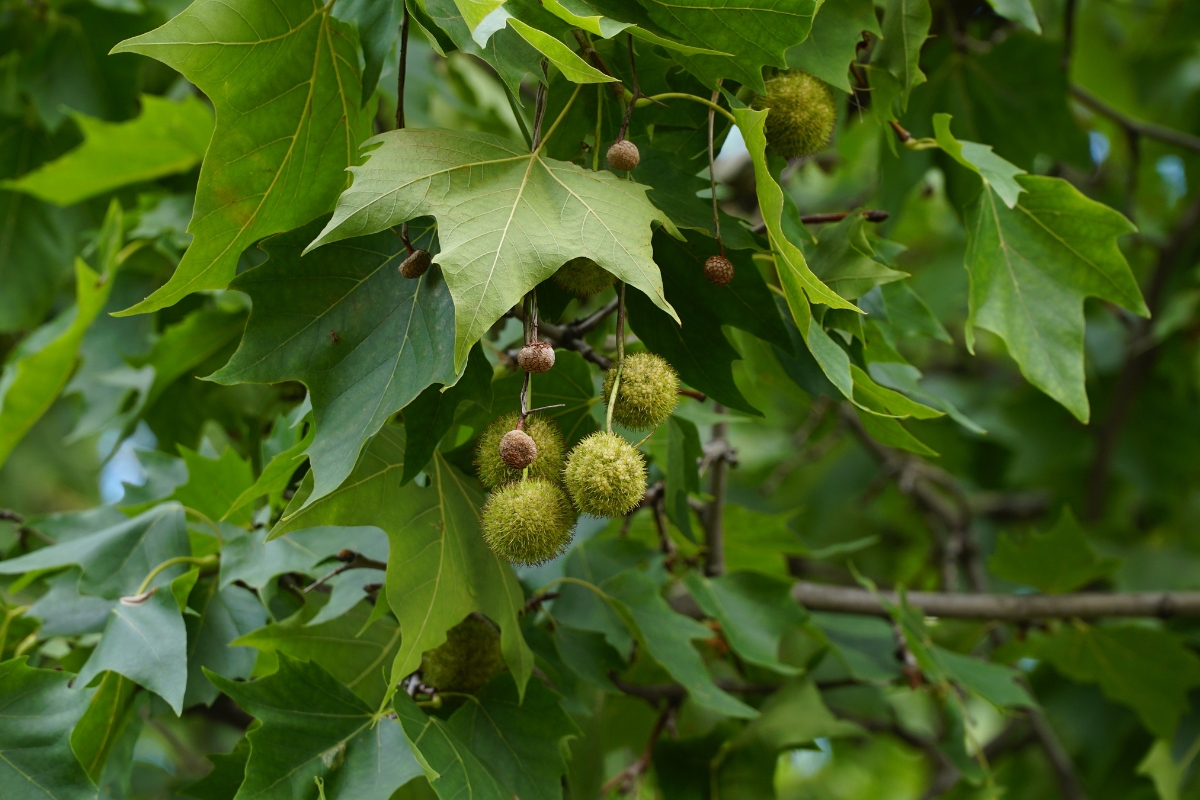
Walnuts (Juglans spp.)
Walnuts are usually known for their edible nuts or their stunning wood. However, there are some other benefits to these trees. The walnut or Juglans genus is one of the groups of trees that you can tap for syrup. They also have medicinal uses. The green hulls of black walnuts make an excellent medicinal tincture that’s useful for reducing inflammation and treating parasitic infections.
In the United States, you can find American black walnut (Juglans nigra), Northern California black walnut (Juglans hindsii), and the butternut (Juglans cincerea). You may also find the English walnut (Juglans regia), which is frequently cultivated for its nuts.
Where you will find walnuts depends on your location, climate, and the species near you. In general, walnuts grow in rich bottomland forests. They tend to be fairly large trees, up to 140 feet tall, with pinnate leaves. The large nuts linger on the forest floor, even months after they have matured and fallen, and are a good way to find the trees.
Beyond having edible leaves and nuts, the nut husks from walnut species can be made into a medicinal walnut tincture or powder, which is used as an iodine supplement and anti-fungal treatment.
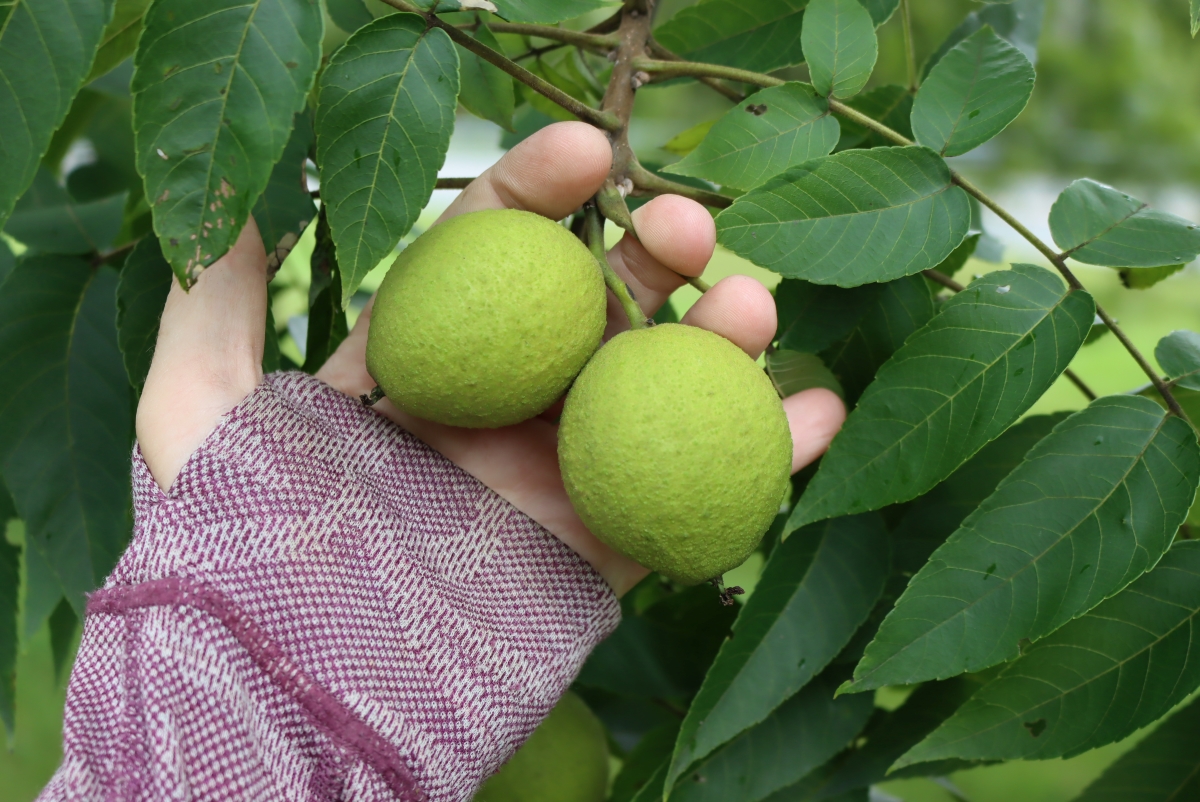
Western Red Cedar (Thuja plicata)
Western Cedars are beautiful, coniferous trees found in the Pacific Northwest. They are incredibly large trees, sometimes reaching 230 feet tall. Their size, fissured bark, and sprays of scale-like leaves, which form in opposite pairs, make them easy to identify.
Like many conifers, western red cedars have edible sap and bark. The inner bark can be dried and powdered to create a flour substitute, and the sap is usually chewed like gum. Western cedar leaves are potent medicinally and can be used to create salves, tinctures, and teas to treat joint pain, coughs, and other lung ailments.
Historically and today, Native Americans and craftspeople have used western red cedars for various purposes. You can use the fiber from the bark to make cloth or rope. The rot-resistant wood is useful for creating canoes, arrows, and other products.
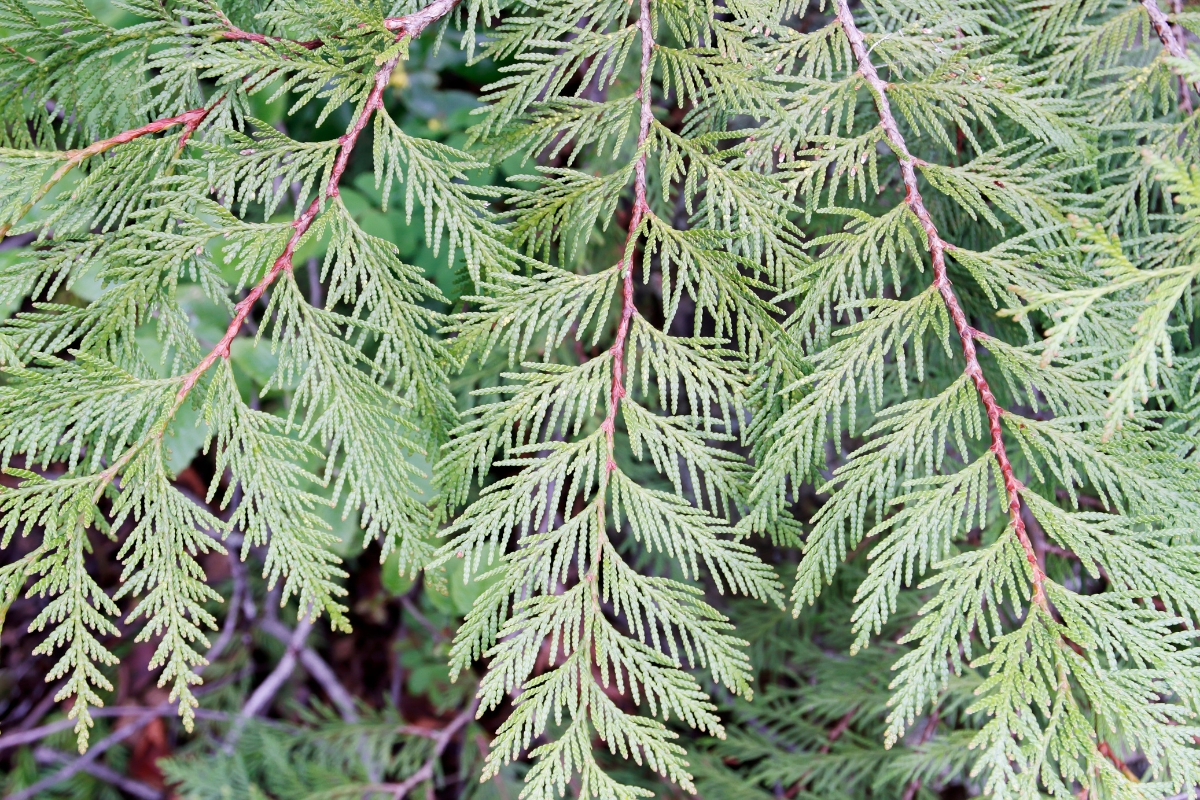
Willow (Salix spp.)
All willow species are edible and medicinal, but not all of them are palatable. The young leaves are exceptionally high in vitamin C, seven to ten times higher than an orange. The young shoots are also edible if you strip off the bark. The shoots and leaves can range from mild to bitter and astringent. The inner bark is also edible, and in survival situations, you can cut it into strips and boil it like pasta or dry it and grind it into a flour substitute.
Herbalists sometimes refer to willow bark as nature’s aspirin because it contains salicin, a chemical similar to acetylsalicylic acid, the active ingredient in aspirin. Some herbalists feel that it is gentler on your stomach than aspirin. However, it isn’t as concentrated and probably doesn’t offer the same level of pain relief.
One of the great things about willows is that you can find them worldwide. About 350 species of deciduous trees and shrubs, plus various hybrids in the willow or Salix genus, occur worldwide, mostly in temperate regions with moist soils. Most willows have elongated, narrow leaves, but they can differ widely with species. It’s worth looking up the specific characteristics of willows in your area.

Foraging Guides
Knowing what to forage is half the battle. These foraging lists will get you started!
- 100+ Edible Wild Plants (Forager’s Bucket List)
- 50+ Edible Wild Fruits and Berries
- 10+ Edible Wild Nuts
- 20+ Wild Edible Roots and Tubers
- 30+ Widl Edible Seeds and Grains
- 16+ Medicinal Trees
